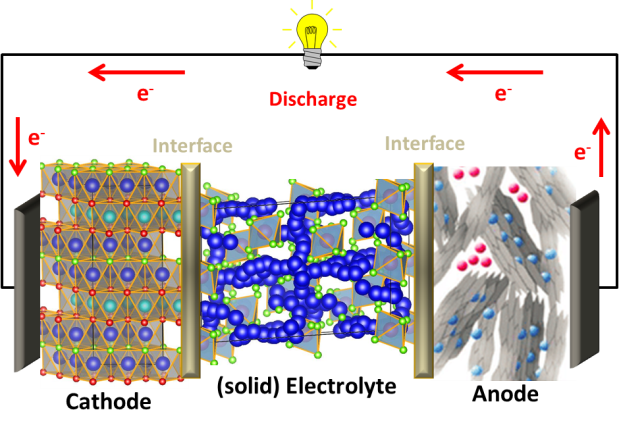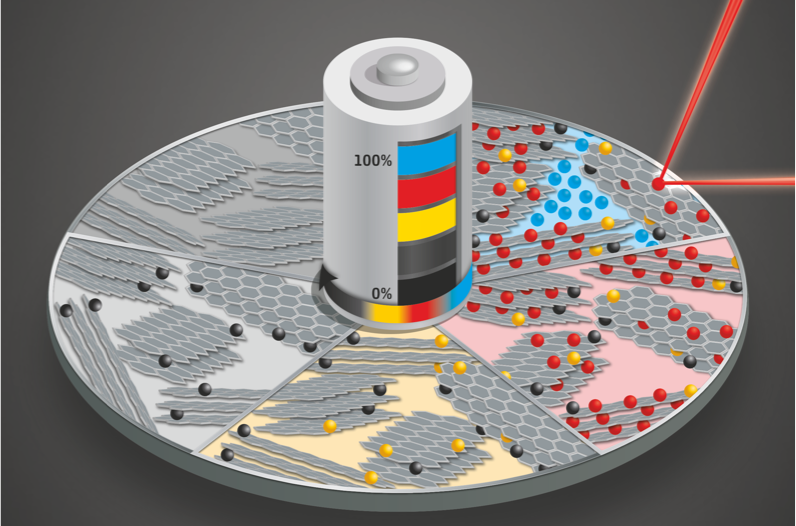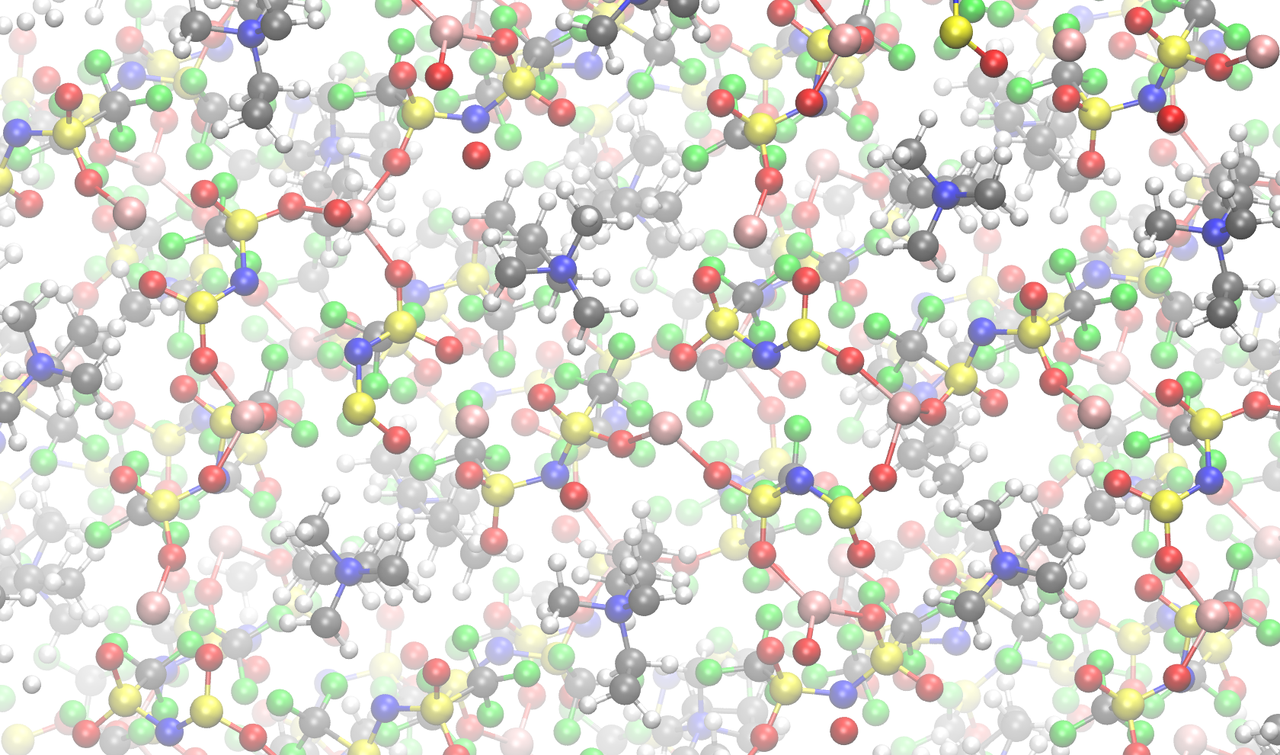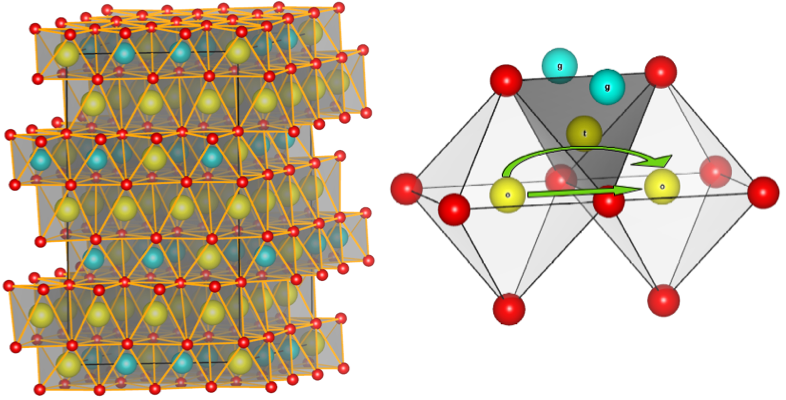Electrochemical Energy Storage
To meet the demands for efficient and sustainable energy storage, future battery technologies need design strategies that are based on an atomistic understanding of the underlying materials. By applying quantum chemistry and density functional theory, we investigate the processes occurring at the anode, cathode, and electrolyte of Li- and post-Li ion batteries. Our research is part of the Cluster of Excellence for new battery technologies (POLiS), which offers a unique joint opportunity in research and education.
Solid state battery

For the effective functioning of a battery, anode, cathode and electrolyte need to exhibit various properties such as high capacity, high energy density, and good ionic conductivity. By applying quantum chemistry and density functional theory, but also molecular dynamics and Monte Carlo methods, we aim to gain insights into the processes occurring in and at the different components of Li- and post-Li ion batteries.
Selected publications
- Stability of magnesium binary and ternary compounds for batteries determined from first principles, J. Phys. Chem. Lett. 13, 10092−10100 (2022).
- Unravelling charge carrier mobility in d0-metal-based spinels, Batteries & Supercaps 5, e202200164 (2022).
- Descriptor and scaling relations for ion mobility in crystalline solids, JACS Au 2, 463–471 (2022).
- Interaction between Li, Ultrathin Adsorbed Ionic Liquid Films and CoO(111) Thin Films: A Model Study of the Solid|Electrolyte Interphase Formation, Chem. Mater. 31, 5537-5549 (2019).
- Unlocking the potential of weberite-type metal fluorides in electrochemical energy storage, npj Computational Materials 5, 31 (2019).




